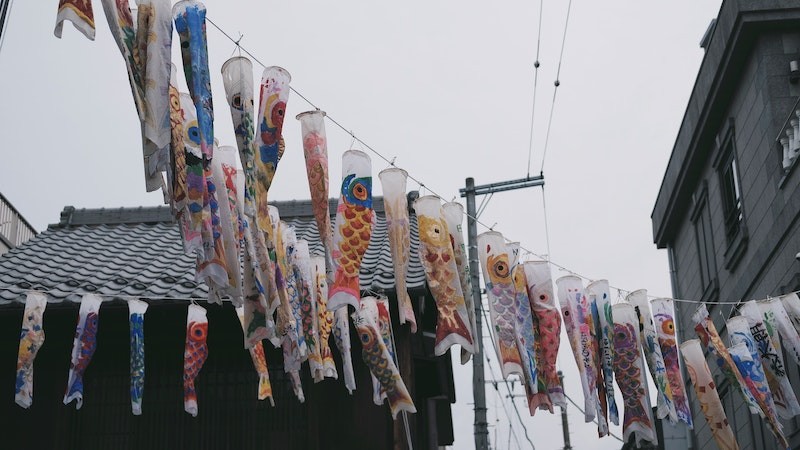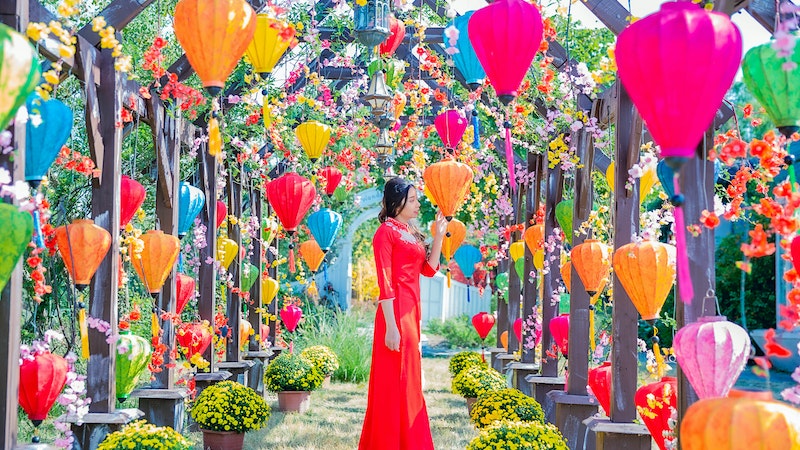
What is Tanabata?
Tanabata (七夕) is commonly referred to as the "star festival," This occurrence takes place on the seventh day of the seventh lunar month.
Legend has it that on July 7, the Altair and Vega stars travel across the Milky Way to rekindle their long-standing relationship.
In Japan, the holiday of lovers is marked by festive decorations and wishes written on long, thin strips of colored paper. Cities across the nation, including Sendai in Miyagi Prefecture, are well known for holding spectacular festivals.
Tanabata All Quick Overview
- Time / Date: July 7, annually
- Category: Religious
- Where It’s Marked: Japan
- Why It’s Marked: Tanabata commemorates the love story of two lovers, symbolized by the stars Orihime and Hikoboshi, who are only permitted to meet once a year, provided the skies are clear.
History Of Tanabata
Tanabata is a summer holiday rooted in the myth of two star-crossed lovers. It has a rich folklore story behind it. Want to know the story? If so, you're at the right place! Brace yourself because we are taking you to a magical land where once upon a time.
There was a princess named Orihime(Vega). She was a weaver who created lovely clothing items. She lived by the Milky Way, a heavenly river. Orihime grew very sad since she spent most of her time weaving and believed she would never find true love.
The God of the Heavens was the father of Orihime. He loved and adored her very much. Her father knew the right man for her, Hikoboshi (Altair), who was good-looking. He was the cow herder living on the Milky Way's opposite side.
They were married after falling in love right away. The two love birds were so madly in love and committed to one another that Orihime stopped weaving, and Hikoboshi let his cows roam the heavens.
The Heavenly God became furious and barred the two lovers from being together. But he was also Orihime's father, and he adored her. Orihime agreed to let them get together once a year if Orihime resumed her weaving to make her happy. He set a date for their yearly reunion on the 7th day of the 7th month.
The long-awaited day finally came, but they couldn't both cross the Milky Way because it was too difficult for them to cross. When Orihime was at her lowest, a group of magpies saw her melancholy and constructed a bridge for her.
Although there are other versions of this tale, this one is the most popular.
How to Celebrate Tanabata

Tanabata is one of Japan's "gosekku," or five seasonal festivals, observed throughout July and August. It is based on Chinese mythology and incorporates elements of several Shinto traditions.
Tanabata's summer solstice festival is considered the most traditional one in Japan. Each regional event has its customs. But in general, the Tanabata festival may be identified by the streams of vibrant strips of paper hanging from big bamboo branches, each bearing a handwritten wish for the next season.
Let's dig deep into the traditions and customs of this colorful festival.
1. Tanzaku
Writing such wishes on tiny strips of paper, known as Tanzaku, is one of the most well-known Tanabata festival rituals.
On the evening of July 7, people write their wishes on pieces of paper and hang them from trees or bamboo stalks in the hopes that they may come true. Following the event, the numerous wishes and their bamboo hosts are frequently either set adrift on a river or incinerated.
Seeing what others are wishing for is entertaining if you can read Japanese. Additionally, they create crane origami ornaments as a form of long-life prayer. Some decorations contain prayers for prosperous trade, successful fishing, orderliness, and enhanced weaving abilities.
2. Tanabata Tree
The bamboo tree is known as the Tanabata tree for hanging wishes. The traditional choice for the wish tree is bamboo because it is readily available and because the thin central branch arches when hung with wishes and ornaments.
It also has many branches where you can hang wishes, and the branches blow lovely in the wind, carrying the wishes up to the stars.
3. Decoration
Another attraction of Tanabata is the vibrant and colorful decorations. The ones with the longest bamboo poles and washi paper streamers are the most striking. These are frequently enormous and vividly colored, making it difficult to miss them. They are used as decorations at Tanabata festivals, stations, and commercial centers.
The Kusudama is an additional star adornment. A big paper ball tops the top of the streamers. Despite the fact that we say "ball," it also comes in other shapes, such as stars and diamonds.
People will swarm to the area in droves to witness the decorations, frequently the major attraction at festivals. The Asagaya Festival in Tokyo, where people make paper-maché sculptures of cartoon and anime characters, is one occasion where these decorations are loud and hilarious.
Festivals typically highlight one of two things: illumination, which results in stunning twinkling landscapes to honor the star-crossed lovers and their heavenly realm, or brilliant colors, emphasized by using many streamers and lavishly adorned bamboo wish trees.
Countries that Observe Tanabata
Tanabata is a hugely celebrated occasion in Japan. It is not a national holiday.
Participating in the festivities is a beautiful way to explore Japanese cultural customs and festivals!
Interesting Facts About Tanabata
Being rich in folklore and legends, Tanabata is already more attractive than other lunar festivals. However, we have gathered some more interesting facts about the festival that might surprise you! Let's check them out.
- The seventh month in the formerly in-use lunar calendar is August rather than July.
- Even though July 7 is the actual day, some localities, like Sendai, celebrate on August 7.
- Star Celebration is a festival that honors love if you take a moment to think about it!
- The
- The Japanese name for Tanabata, or star festival, is Shichiseki no Sekku.
- The weather prediction isn't good because if it rains on Tanabata, the magpies won't appear, and the lovers would have to wait another year to be reunited. On Tanabata, the Japanese hope for a sunny day, and the weather is always lovely.
- Japanese people traditionally wear yukata, a light cotton summer kimono, on Tanabata.
- On June 30, when summer officially begins, numerous shrines conduct purification rites. The bamboo and light displays created for this day are often retained on the shrine grounds until the evening of Tanabata on July 7. Tanabata is regarded as the first summer event of the year as a result.
Unique Tanabata Celebration Ideas
Though Tanabata is the epitome of traditional festivals, getting creative is no harm! So this Tanabata, try something off the box. Your list might include,
1. Visit Japan
Have you ever considered traveling to Japan? How could you not want to experience a Tanabata festival when visiting Japan?
This Tanabata, visit Kifune Shrine, Tokyo Disney Resort, Kappabashi of Japan, and don't forget to take in the beautiful ambiance of the yearly Star Festival!
2. Make a Colorful Wish
Each color in Tanzaku has a unique meaning. Making the right color choice can increase the likelihood that your desire will come true!
Yellow is the hue of friendship and is the perfect choice for wishes involving relationships. Black is the color to choose if you want to boost your brainpower and skills. For example, red can help with desires connected to ancestors and family and wishes for expressing thanks.
3. Tell Stories
With the Tanabata festival being so rich with legend and folklore, tell your kids stories of the Altair and Vega. Have a great time together while discussing celestial constellations and the Milky Way.
Tanabata Quotes
"On Tanabata, we wish for a clear sky so lovers will always be reunited."
FAQ
1. What is the difference between Tanabata and Qizi festivals?
Tanabata is Japanese, whereas Qixi is Chinese. While Tanabata is observed in Japan on July 7 according to the Gregorian calendar, Qixi is celebrated in China on July 7 according to the Lunar calendar.
2. What is the story behind the name “Tanabata”?
The Tanabata Festival's name in kanji is 七夕, which translates to "seventh evening." When the festival merged with the Shinto ceremony, the kanji reading changed to "Tanabata," but they kept their original meaning of the seventh evening.
3. What was Tanabata called initially?
Tanabata was initially called "shichiseki," where "shichi" means seven and "seki" means evening.
4. What are the seven decorations of Tanabata?
(a) “Tanzaku” -paper strips (b) "Fukinagashi" -streamers (c) "Orizuru" -origami paper cranes (d) "Kinchaku" -purses (f) "Toami" - origami nets (g) "Kuzokago" - garbage bags (h) "Kusudama" -ornamental balls
Tanabata Observances
| Year | Weekday | Date | Name |
|---|---|---|---|
| 2021 | Wednesday | 07 July | Tanabata |
| 2022 | Thursday | 07 July | Tanabata |
| 2023 | Friday | 07 July | Tanabata |
| 2024 | Sunday | 07 July | Tanabata |
| 2025 | Monday | 07 July | Tanabata |
| 2026 | Tuesday | 07 July | Tanabata |
We constantly update the dates of holidays that keep changing every year. However, while we revise and change some dates to be accurate, if you find any errors, kindly inform us . That will mean a lot to us.



